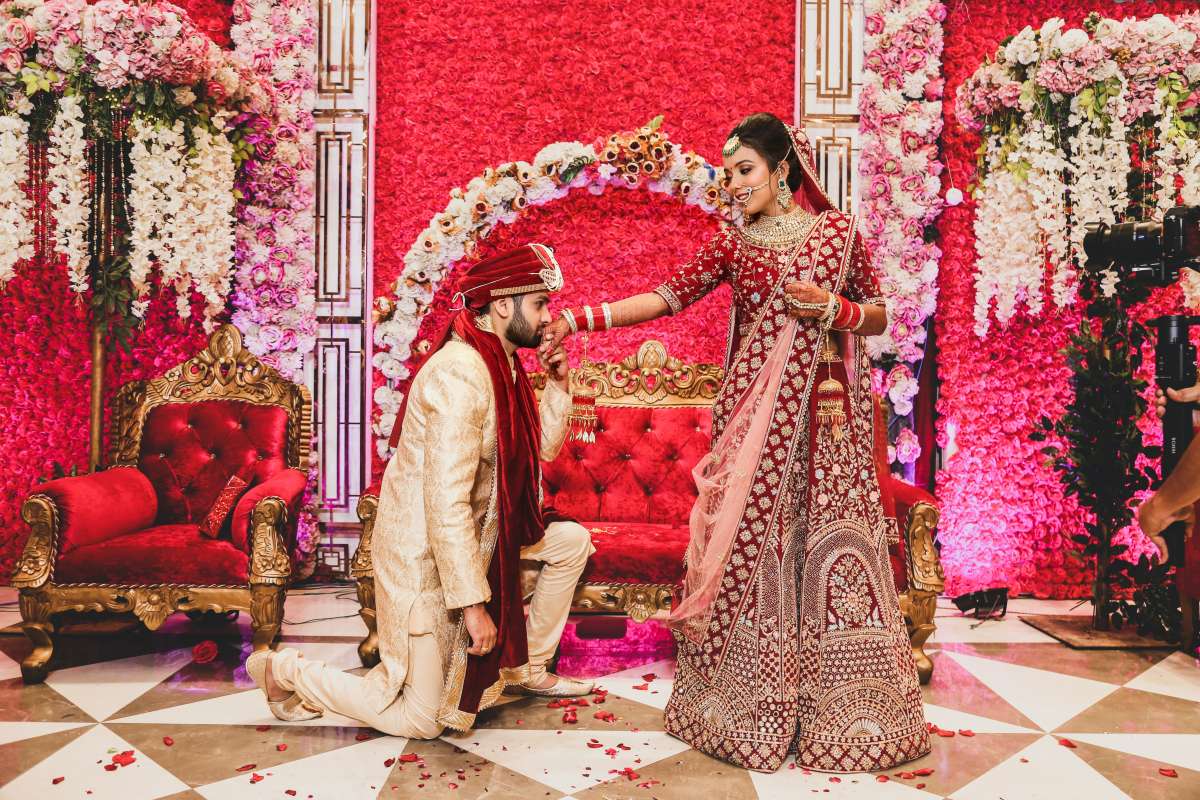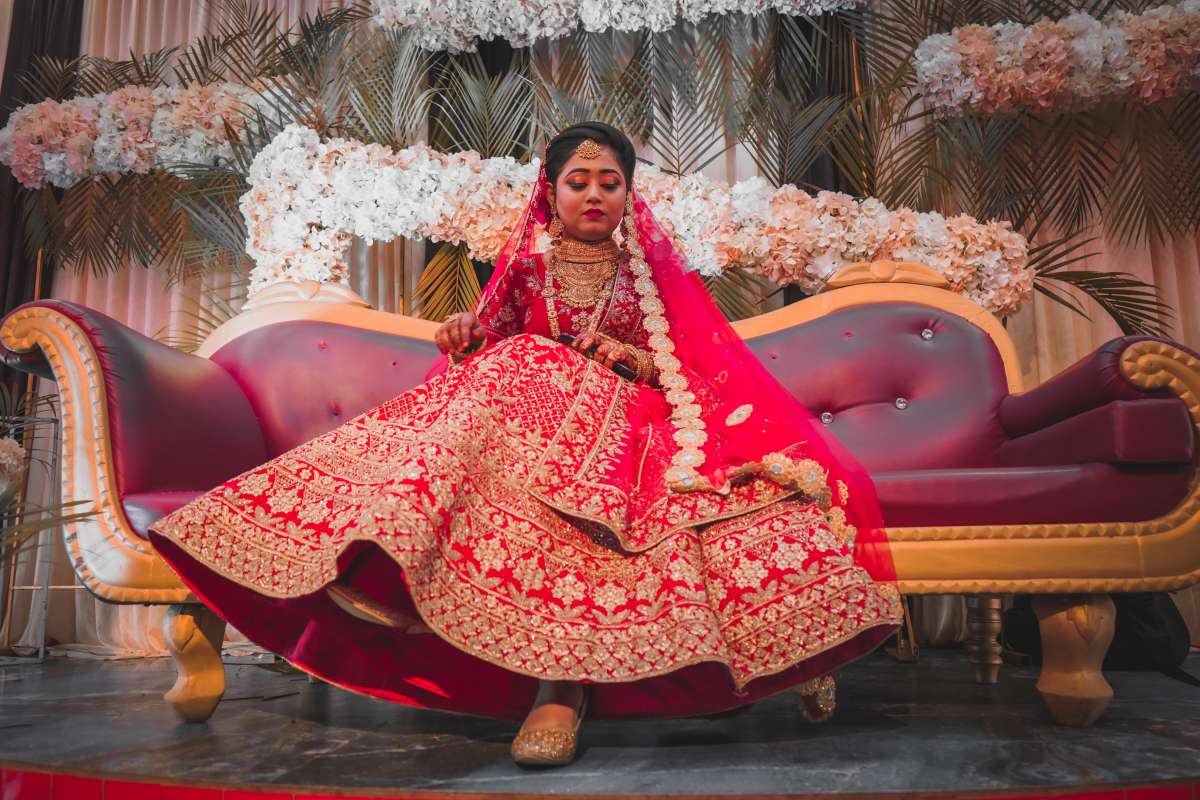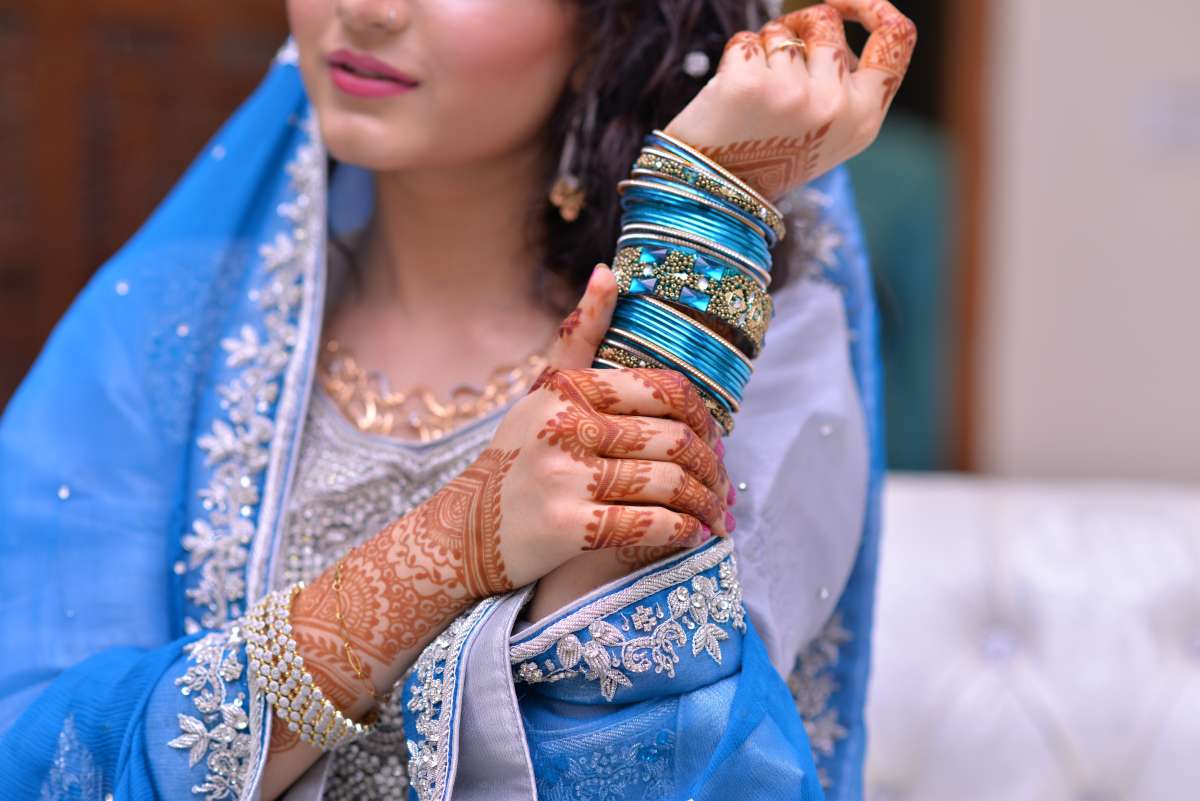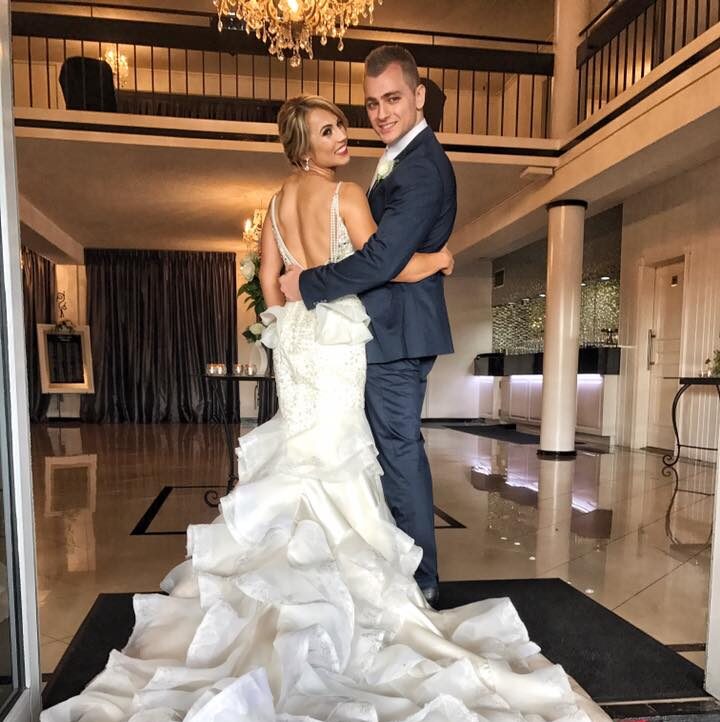Weddings are a grand celebration of love, culture, and tradition, and for Indian brides, their attire is at the heart of this celebration. From the intricate drape of a saree to the opulence of a lehenga choli, the bridal look is a reflection of personal style and cultural heritage. But with modern trends blending seamlessly into traditional designs, today’s brides are embracing a mix of the old and new. Whether it’s the rich Kanjeevaram silk or a contemporary fusion lehenga, this guide takes you through the stunning variety of bridal wear that makes Indian weddings unforgettable.
Traditional Indian Bridal Attire: Timeless Elegance
When it comes to Indian weddings, nothing captures the essence of tradition and culture quite like the bridal attire. The choice of wedding dress is deeply symbolic, reflecting both the bride’s heritage and her personal style. Growing up in India, I always knew that the wedding dress was more than just a garment — it was an integral part of the celebration, storytelling, and rituals.
As I reflect on the weddings I’ve witnessed over the years, I realise just how much the saree and lehenga choli, two of the most iconic bridal outfits, shape the narrative of Indian weddings. Let’s dive into the timeless elegance these garments bring, both in terms of traditional craftsmanship and modern-day adaptations.
The Classic Sari for Indian Brides
The saree is an age-old symbol of grace and beauty. I remember attending a wedding in Melbourne, where the bride, a local from South India, wore an exquisite Kanjeevaram saree. The rich gold zari work glistened under the lights as she walked down the aisle, her confidence and poise radiating through the traditional red and gold combination.
Sarees come in a variety of fabrics, including silk, chiffon, and georgette, with each material offering a different kind of flow and feel. A Kanjeevaram saree, for instance, is made from pure mulberry silk and features rich, heavy zari work that speaks volumes about the bride’s cultural background. The fabric’s durability and weight make it a favourite for brides seeking both opulence and tradition.
Popular Fabrics and Embellishments
- Silk Sarees: Known for their luxurious feel and weight, silk sarees like the Banarasi saree from Varanasi are often heavily embroidered with intricate gold patterns. I remember a friend’s wedding where her Banarasi saree shimmered like a work of art, with delicate floral motifs showcasing the mastery of Indian weavers.
- Chiffon Sarees: These are lighter and flowier, offering comfort without compromising on elegance. They are a great choice for weddings in warmer climates, like the summer weddings I’ve attended in Queensland, where the temperatures can soar, and a heavy silk saree might feel too warm.
- Georgette Sarees: Georgette offers a modern twist on the traditional saree, with its lighter texture and graceful drape. It’s perfect for the bride who wants something a bit more flexible without sacrificing the traditional silhouette.
Sarees are often complemented by heavy zari (gold or silver thread work), beadwork, and mirror embellishments, which create a dazzling effect, especially under wedding lights.
The Lehenga Choli: A Symbol of Royalty
If the saree is a symbol of grace, then the lehenga choli represents grandeur. I remember one wedding at Vogue Ballroom where the bride wore a magnificent lehenga choli in deep red and gold. The lehenga (skirt) was intricately embroidered, while the choli (blouse) was adorned with fine beadwork and mirrors. The whole ensemble exuded royalty and elegance.
The lehenga choli consists of three components: the lehenga (a voluminous skirt), the choli (a blouse that can range from cropped to full-sleeved), and the dupatta (a veil or scarf). What makes the lehenga choli so popular, especially in North India, is its versatility and elaborate designs. I’ve seen brides in Melbourne sporting lehenga cholis that could rival any royal wedding ensemble, with layers of delicate zardozi embroidery, gota patti work, and sequins.
Why Choose Lehenga Choli?
- Cultural Symbolism: In places like Rajasthan and Uttar Pradesh, brides often wear lehengas adorned with Zardozi (intricate gold or silver threadwork) and mirror embellishments, signifying the richness of the region’s history.
- Variety in Styling: A lehenga choli can be styled in many ways. Some brides prefer a more traditional approach, wearing the dupatta over their head, while others opt for a more contemporary twist, draping it over the shoulder.
One of the key features of the lehenga choli is its ability to be passed down through generations. In a recent wedding I attended, the bride wore a lehenga passed down from her grandmother. The outfit was simple yet stunning, and it perfectly captured the essence of family and tradition.
Alternative Bridal Outfits: Embracing Grace and Comfort
As the traditional wedding dress evolves, brides are increasingly opting for alternative outfits that balance both grace and comfort. Anarkali suits and Sharara sets have become popular choices in recent years, offering a fusion of modern and traditional styles.
Anarkali Suits: Flowing Elegance
The Anarkali suit is perfect for brides who want to add a touch of royalty to their look. Inspired by the Mughal era, this style features a long, flowing silhouette that creates a beautiful, regal effect. I recall a wedding where the bride wore an Anarkali gown with rich embroidery around the bodice and a graceful flow that looked like it belonged in a palace.
Sharara Sets: Opulence and Comfort
A Sharara set is another option for brides looking for comfort without compromising on style. This outfit consists of a long kurta (tunic) paired with flared pants, creating a glamorous yet comfortable look. The Sharara set is especially popular in North India, particularly during pre-wedding events like mehendi (henna) ceremonies.
Regional Variations in Indian Bridal Wear: A Tapestry of Tradition
for modern expression.
One of the things I love most about Indian weddings is the incredible diversity of bridal wear across different regions. As a wedding consultant, I’ve had the privilege of attending weddings in different parts of India, and each region offers its own unique take on bridal attire. Whether it’s the vibrant lehenga cholis of North India or the elegant Kanjeevaram sarees of the South, each region showcases the bride’s cultural heritage through her wedding attire.
When my partner and I got married at Vogue Ballroom, we blended elements of both North and South Indian traditions, which not only represented our backgrounds but also brought together two distinct bridal styles.
Let’s take a closer look at some regional variations in bridal wear.
Bridal Attire in North India
In North India, the lehenga choli is the quintessential bridal outfit, often chosen for its regal and opulent appearance. I’ve seen many brides in Melbourne wear lehengas from famous designers like Sabyasachi or Manish Malhotra, who create intricate pieces with modern embellishments while maintaining traditional roots. One thing that’s always consistent in North Indian bridal wear is the emphasis on heavy embroidery and bold jewellery.
Key Elements of North Indian Bridal Wear:
- Gota Patti Lehenga: In Rajasthan, brides often wear Gota Patti lehengas, a style of embroidery that uses gold or silver ribbon to create beautiful, intricate patterns. I witnessed a stunning Rajasthan wedding where the bride’s gota-patti lehenga shimmered under the lights, creating a royal vibe that was simply unforgettable.
- Zardozi Lehenga: From Uttar Pradesh, the Zardozi lehenga is another iconic choice. Zardozi is a type of heavy gold embroidery, often adorned with pearls and precious stones. I remember a wedding where the bride’s lehenga featured stunning zardozi work, paying homage to the Mughal era. The intricate detailing was breathtaking.
- Banarasi Silk Saree: In regions like Varanasi, brides often wear the Banarasi silk saree, a luxurious fabric known for its intricate brocade work. I was at a wedding where the bride’s Banarasi saree looked almost like a work of art, woven with gold and silver threads.
Bridal Wear in South India: Graceful and Rich
In contrast to the opulent North Indian bridal wear, South Indian brides often choose a more understated yet equally luxurious outfit: the Kanjeevaram silk saree. This traditional saree is a symbol of grace and elegance, often passed down through generations. I remember the wedding of a Tamil bride in Melbourne, where she wore a Kanjeevaram saree with rich gold work that was simply breathtaking. The deep red and gold combination she chose reflected both the importance of tradition and the bride’s own personal touch.
Key Elements of South Indian Bridal Wear:
- Kanjeevaram Silk Sarees: This is the most iconic bridal attire in South India. The silk is sourced from the town of Kanchipuram, known for its pure mulberry silk. The saree often features heavy gold zari work and rich colours like red, gold, and green. At a wedding I attended in Sydney, the bride’s Kanjeevaram saree was nothing short of spectacular, with intricate temple border motifs symbolising prosperity and good fortune.
- Pattu Pavadai: In Tamil Nadu, brides sometimes wear a Pattu Pavadai, a two-piece set consisting of a silk skirt and blouse. This outfit is perfect for brides who want something more traditional yet comfortable, as it’s lightweight compared to a saree.
Bridal Wear in Eastern and Western India
Indian bridal wear extends far beyond the traditional saree and lehenga choli. In Eastern India, particularly in Bengal, the white and red saree is a popular choice for brides. The Benarasi saree, with its fine gold work and rich brocade, is the go-to fabric for these brides. I was once at a Bengali wedding in Melbourne, where the bride wore a white saree with a red border. The simplicity of the white saree was offset by the bold red border and intricate Benarasi embroidery, which truly made her look divine.
Key Elements of Eastern Indian Bridal Wear:
- Bengali Bridal Saree: The white and red saree is symbolic of purity and fertility. The bride typically wears a Benarasi saree, known for its fine brocade and detailed craftsmanship. The red and white colour combination is often seen as a representation of new beginnings and good fortune. The mangalsutra and traditional bindi are essential to complete the look.
- Bandhani Saree/Lehenga: In Gujarat, brides often wear Bandhani sarees or lehengas, a tie-dye technique that creates intricate patterns using vibrant colours. I’ve seen many brides in Melbourne wear Bandhani lehengas for their cultural weddings, adding a beautiful burst of colour.
Key Elements of Western Indian Bridal Wear:
- Paithani Saree: In Maharashtra, brides wear Paithani sarees, known for their intricate peacock and parrot motifs woven with gold zari threads. At a wedding I attended in Mumbai, the bride’s Paithani saree caught the light beautifully, making her look regal and sophisticated.
- Maharashtrian Bridal Look: A traditional Maharashtrian bride often completes her look with a nine-yard saree, which is draped in a distinctive style, and accessorises with gold jewellery, especially the Thushi necklace. The bride I saw at a Pune wedding embodied this look perfectly, blending cultural heritage with modern styling.
Bridal Wear in Northeast India: A Simpler, Elegant Approach
Bridal attire in the Northeast is typically simpler and more understated, yet no less elegant. In Assam, the bride wears a Mekhela Chador, a traditional garment made from handwoven silk. I had the opportunity to attend a wedding in Guwahati, where the bride wore a Mekhela Chador made of luxurious Muga silk. The intricate motifs, inspired by Assamese heritage, were subtle yet striking.
Key Elements of Northeast Indian Bridal Wear:
- Mekhela Chador: This two-piece outfit consists of a wraparound skirt and an upper piece, draped gracefully over the body. It’s a popular choice for brides in Assam and offers a more minimalist and elegant bridal look compared to other regions.
- Handwoven Fabrics: Northeast Indian bridal attire is known for its handwoven silk and cotton fabrics. The designs often feature traditional Assamese motifs, such as floral and geometric patterns, symbolising nature and prosperity.
Colours and Embellishments in Indian Bridal Wear: Symbolism and Elegance
The choice of colour in Indian bridal wear is not just about personal preference; it’s deeply rooted in culture, tradition, and symbolism. Over the years, I’ve witnessed countless weddings where the bride’s outfit wasn’t just a reflection of style, but a representation of values, beliefs, and even the blessings of the divine.
During my own wedding at Vogue Ballroom, I chose to wear a rich, deep red lehenga, a colour that is not only traditional but also symbolises strength, love, and prosperity. The symbolism attached to each hue brings a deeper meaning to the celebration, adding layers to the outfit beyond mere aesthetics.
Let’s break down the colours that dominate Indian bridal wear and the embellishments that elevate these garments into works of art.
The Power of Colour: From Red to Pastels
In India, red is considered the most auspicious and symbolic colour for a bride. In fact, during our own wedding planning, I learned that the colour red is thought to embody purity, fertility, strength, and love. It’s said to invoke the blessings of Durga, the Hindu goddess of strength and protection, and is traditionally believed to ward off evil spirits.
Key Colours and Their Meanings:
- Red: The quintessential bridal colour. It’s associated with the goddess Durga, symbolising strength, bravery, and fertility. During a wedding I attended in Delhi, the bride wore a stunning red lehenga, and the entire ceremony was charged with energy. The red threads, combined with golden embellishments, created a vibrant, almost divine aura.
- Gold: Often paired with red, gold signifies wealth, prosperity, and success. Gold has been a traditional colour of choice for bridal attire across many regions in India. At a wedding in Hyderabad, I saw a bride don a golden Kanjeevaram saree, and the richness of the fabric combined with her intricate gold jewellery left everyone in awe. Gold is not just an ornament but a symbol of the new life a bride embarks on.
- Pastels and Jewel Tones: Over the years, I’ve noticed that many brides are opting for softer pastel shades like blush pink, ivory, and lavender. These colours are often chosen for their elegance and modern appeal, especially for weddings that take place in spring or summer. For instance, during a wedding in Melbourne, the bride wore a pastel peach lehenga, which added a delicate charm to the ceremony, especially under the soft daylight.
- Earthy Tones: Rich, earthy tones like burnt orange, sage green, and deep browns are making their way into modern bridal wardrobes. At a wedding I attended in Goa, the bride’s dress was a deep terracotta colour, which blended beautifully with the coastal scenery. Earth tones offer a grounded, serene look, making them an appealing option for brides seeking something less traditional yet full of meaning.
Intricate Embellishments: Adding Sparkle and Splendour
The embellishments on Indian bridal attire aren’t just about adding sparkle; they are symbols of wealth, craftsmanship, and love. The intricate zari work, mirror work, and beadwork are often passed down through generations, with each stitch carrying with it the stories of countless brides before them.
I remember a wedding in Chennai where the bride’s saree was a masterpiece of gold zari work. The intricate designs, depicting deities and floral motifs, were so finely detailed that they shimmered with every movement she made. The bride looked like she stepped out of an ancient tapestry, yet the attire felt perfectly modern and fresh.
Types of Embellishments:
- Zari Work: Zari is one of the oldest forms of embroidery, using gold or silver threads to create intricate patterns. It’s most commonly found in Kanjeevaram and Banarasi sarees, but it’s also a popular choice for lehenga cholis. I remember another wedding where the bride’s Banarasi saree was covered in intricate zari work, making it look like a divine tapestry of gods and flowers.
- Gota Patti: This Rajasthani technique involves sewing gold or silver ribbon onto fabric to create stunning patterns. The bride at one of the Jaipur weddings I attended wore a Gota Patti lehenga, which added a delightful sparkle without being too flashy. The gold threads shone beautifully in the evening light, and the bride looked nothing short of regal.
- Mirror Work: This is a technique that’s often used in traditional Rajasthani and Gujarati bridal wear. The use of small mirrors sewn into fabric adds a dazzling effect, creating an enchanting look, especially when the bride moves. I once attended a wedding in Udaipur, where the bride’s lehenga was embroidered with tiny mirrors, which created a stunning reflection under the evening lights.
- Beadwork and Sequins: Beads and sequins are often used in conjunction with other embellishments to add a modern touch to traditional attire. Brides who opt for modern lehengas often choose these embellishments for a more contemporary, glamorous feel. At a wedding in Mumbai, the bride’s sequinned lehenga shimmered like stardust, adding an element of lightness to her otherwise traditional attire.
Fabrics: The Foundation of Bridal Elegance
Fabrics are the backbone of any bridal outfit, setting the tone and feel of the entire ensemble. Luxury fabrics like silk, chiffon, velvet, and georgette are often used for their fluidity, comfort, and richness.
- Silk: The epitome of bridal luxury, silk is often used for its lustrous finish and weight. Kanjeevaram silk is renowned for its strength and beautiful sheen, while chiffon offers a lighter, flowier feel, perfect for warmer weather.
- Velvet: Velvet has made a strong comeback in recent years, particularly for winter weddings. It offers a rich texture and feels luxurious against the skin. I once saw a bride in Kolkata wearing a velvet lehenga with exquisite gold embroidery, and the result was pure opulence.
Essential Bridal Accessories: Completing the Look
In Indian weddings, accessories are just as important as the outfit itself. From the sparkling jewellery to the delicate footwear, each accessory plays a symbolic role, adding to the bride’s beauty and grace. Over the years, I’ve seen countless brides choose their accessories with just as much care and thought as their attire. I remember the feeling of excitement when I selected my own bridal maang tikka and bangles—small but essential pieces that tied everything together.
A bride’s accessories not only elevate her look but also have deep cultural significance, many of which have been passed down for generations. Let’s explore the key bridal accessories and how they enhance the overall bridal experience.
Indian Bridal Jewellery: A Symbol of Beauty and Strength
Jewellery is one of the most crucial elements of an Indian bride’s ensemble. Traditionally, gold jewellery is preferred as it symbolises wealth, prosperity, and good fortune. During my wedding planning, I remember feeling the weight of gold as I selected each piece, knowing that it carried centuries of tradition. For many brides, the jewellery is just as important as the dress, as it completes the bridal look and is often passed down from mother to daughter.
Key Jewellery Pieces:
- Maang Tikka: This headpiece, worn on the forehead, is a symbol of the bride’s connection to the divine and represents her journey into married life. I still remember the day I selected my maang tikka. It was a delicate piece with intricate polki diamonds, and it became one of the most talked-about pieces at our wedding. The gentle sway of the maang tikka added movement to the bride’s face, drawing attention to her eyes and adding an ethereal look.
- Necklaces: The bridal necklace is typically a heavy piece, often with precious gemstones and diamonds. The bride’s neck is adorned with multiple layers of necklaces in some traditions. I’ve seen brides in Melbourne wear stunning polki or kundan necklaces, which are traditional yet contemporary, blending cultural and modern aesthetics.
- Earrings: No bridal look is complete without a pair of jhumkis (dangling earrings). They are often large and elaborately designed, drawing attention to the bride’s face and adding a playful, yet elegant, touch. During a wedding I attended in Chennai, the bride wore the most exquisite jhumkis in rose gold that perfectly complemented her Kanjeevaram saree, adding a touch of softness to the outfit.
- Bangles: Bangles or chudiyan are a classic piece of jewellery that symbolises marital bliss and prosperity. At my own wedding, I wore a stack of gold bangles that I had inherited from my grandmother. The sound of the bangles as I moved was a comforting reminder of the legacy of marriage that had been passed down through generations.
- Nose Ring (Nath): The nose ring or nath is worn on the nostril and symbolises strength and beauty. It’s particularly common in brides from Maharashtra, Rajasthan, and Punjab. I recall a wedding I attended in Delhi where the bride wore a large nath, and it was simply mesmerising, complementing her entire bridal ensemble.
- Toe Rings: In some cultures, toe rings are worn as a symbol of a woman’s married status. During an intimate wedding I witnessed in Rajasthan, the bride wore traditional silver toe rings, which added an understated yet meaningful touch to her look.
Dupatta: A Symbol of Tradition and Blessings
The dupattas worn by Indian brides are often heavy, embroidered, and designed to complement the wedding attire. This scarf-like garment has been a part of bridal wear for centuries. I remember the moment my own dupatta was draped over my head during our ceremony at Vogue Ballroom — it was more than just a piece of cloth; it symbolised my transition from one phase of life to another.
Significance of the Dupatta:
The dupatta is often heavily embroidered with intricate zari work, mirrors, or sequins, adding both glamour and elegance. Traditionally, the dupatta is draped over the bride’s head as a sign of modesty and respect, but it can also be worn in various ways depending on the bride’s personal style.
- Red Dupatta: In many Hindu weddings, the red dupatta is seen as a symbol of marital bliss and is often worn over the bride’s head as a mark of her new journey in life. The rich embroidery on a red dupatta can transform even the simplest outfit into something regal.
- Sheer Dupattas: Some modern brides opt for lighter, sheer dupattas adorned with crystal embellishments or delicate borders. This type of dupatta is more contemporary, often worn over the shoulder or draped loosely. The bride I saw in Sydney wore a sheer, crystal-embellished dupatta over her wedding gown, which made her look like she was glowing under the lights.
Bridal Footwear: Comfort Meets Style
When it comes to bridal footwear, comfort and style need to go hand in hand. After all, a wedding involves long hours of standing, dancing, and walking, and the last thing any bride wants is sore feet. I remember struggling with my heels during my wedding day, and I can’t stress enough how important it is to choose comfortable footwear that complements your outfit.
Types of Bridal Footwear:
- Juttis: Traditional juttis are a popular choice for brides, especially in regions like Punjab and Rajasthan. These handcrafted shoes, often adorned with beads, mirrors, or sequins, add an elegant touch to the bride’s attire. I saw a bride in Delhi wearing embroidered golden juttis that perfectly matched her lehenga, providing both comfort and style.
- Embellished Sandals: Some brides opt for embellished sandals or heels that are designed with intricate beading or pearls. These shoes, often custom-made to match the bridal attire, are perfect for brides who want to add a modern twist to their traditional look.
- Comfortable Flats: For brides who want a break from heels, comfortable flats are a great option. During a wedding in Kerala, the bride wore beautiful flat sandals decorated with gold embroidery that perfectly complemented her saree, and she was able to dance all night without any discomfort.
Henna (Mehendi) and Its Cultural Significance
No bridal look is complete without henna (also known as mehendi), which is applied to the bride’s hands and feet in elaborate, intricate designs. Henna is not just a decoration; it carries deep cultural significance, symbolising joy, beauty, and spiritual awakening. I still remember my own mehendi ceremony, where the application of henna felt like a beautiful ritual that marked the beginning of a new chapter in my life.
Symbolism of Mehendi:
Mehendi designs are often full of symbolism — floral patterns, peacocks, and paisleys are common motifs. In many cultures, the depth of the henna stain is said to reflect the depth of the bride’s love and the bond she shares with her partner.
- Mehendi on Hands and Feet: Traditionally, the bride’s hands and feet are decorated with intricate mehendi patterns that often incorporate the bride and groom’s initials or symbols of love. It’s not just a decoration; it’s a celebration of the bride’s journey.
Modern Bridal Trends: Contemporary Styles for the Modern Indian Bride
While tradition is at the heart of Indian weddings, modern brides are increasingly looking for ways to blend classic elements with contemporary influences. As wedding styles evolve, I’ve noticed a shift towards minimalism, fusion wear, and innovative colour choices in bridal attire. This mix of old and new makes Indian bridal wear exciting and adaptable to personal tastes, as well as global trends.
One wedding I attended in Sydney was a perfect example of this blend. The bride chose a modern lehenga choli with a dramatic train but kept the traditional colours of red and gold. It was a nod to her roots, while the modern silhouette and minimalist embroidery gave the outfit a fresh and contemporary feel.
Let’s look at some of the key trends that are shaping the bridal scene today.
Contemporary Veils and Dramatic Train-Back Lehengas
More and more brides are opting for dramatic, Western-inspired designs like long train-back lehengas. These lehengas mimic the look of a traditional Western bridal gown but are infused with Indian elements, like intricate embroidery or heavy zari work. The trend of incorporating veils, which was once not a part of Indian weddings, is also becoming increasingly popular, with sheer dupattas and crystal-embellished veils making a statement at weddings.
At a recent wedding I attended in Melbourne, the bride wore a long train lehenga paired with a delicate sheer dupatta over her head, which gave her an almost ethereal presence as she walked down the aisle. The combination of the contemporary silhouette with traditional detailing was nothing short of stunning.
Fusion Wear: Mixing Indian Tradition with Western Silhouettes
Indo-Western fusion wear has also become a go-to choice for many modern brides. The mix of traditional embroidery with Western gowns or contemporary saree styles has paved the way for more varied and versatile wedding attire. Brides are combining Anarkali-style gowns or pre-draped sarees with modern colours like blush pink, ivory, or metallic gold to create a unique look.
I recently saw a bride who opted for a saree gown at a wedding in Delhi, and it was a perfect example of how tradition can be modernised. The saree was pre-draped, and the gown style allowed her to move with ease, offering a perfect blend of Indian heritage and contemporary flair.
Minimalism: Less is More
In stark contrast to the heavy embellishments and intricate designs of traditional bridal wear, some brides are choosing simpler, more minimalist outfits. Clean lines, subtle embroidery, and light fabrics have gained popularity among brides who prefer an understated yet elegant look. I’ve seen brides opt for monotone sarees or lehengas with minimal beadwork, keeping the focus on their natural beauty and the significance of the ceremony.
At a recent wedding I attended in Bangalore, the bride wore a simple silk saree with a few elegant floral patterns embroidered along the edges. While the outfit wasn’t heavy on embellishments, the bride looked radiant and absolutely timeless. Minimalism is becoming a hallmark of the modern Indian bride, making a subtle yet powerful statement.
Personalisation and Customisation: Reflecting Individual Style
Modern brides are increasingly looking for ways to add a personal touch to their wedding attire. Customisation has become an essential part of bridal fashion, whether through personalised embroidery, unique colour choices, or incorporating family heirlooms into the dress.
For instance, at a wedding I consulted for, the bride had her wedding date embroidered into the hem of her lehenga, a beautiful personal touch that made the outfit even more meaningful. Additionally, many brides are choosing to incorporate their mother’s jewellery or even vintage accessories to honour their family’s legacy while creating their own distinct bridal look.
Celebrating Heritage and Personal Style
Choosing the perfect bridal outfit is about much more than looking beautiful on your wedding day — it’s about embracing your heritage, expressing your personality, and celebrating the love that binds you and your partner. The traditional saree and lehenga choli, with their deep cultural roots, offer timeless elegance, while modern trends allow for greater flexibility, creativity, and personal expression.
Whether you’re leaning toward a classic Kanjeevaram saree, a dramatic lehenga, or even a fusion outfit, remember that your bridal wear should reflect who you are and what your wedding day means to you. The most important thing is to feel confident and radiant as you walk into this new chapter of life.
Let’s Get Straight to the Point
Indian bridal attire is a captivating blend of tradition, culture, and personal style. The most iconic bridal outfits are the saree and lehenga choli, each rich with heritage and craftsmanship. Regional variations across India offer diverse bridal styles, from the Banarasi saree in the North to the Kanjeevaram saree in the South. Modern brides are embracing trends like fusion wear, minimalist outfits, and dramatic lehengas, combining traditional elements with contemporary influences. Bridal accessories, such as jewellery, footwear, and the dupatta, are essential to complete the look. Choosing bridal attire is an opportunity to celebrate culture, style, and individuality.





